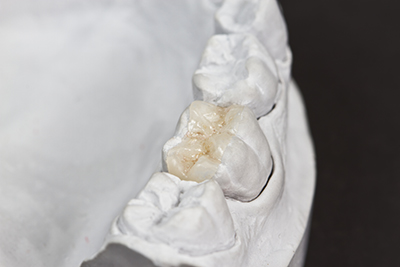Restore Damaged, Weakened Teeth – Without Metal
If more than half of a molar’s biting surface is damaged or decayed, at Somerset Prosthodontic Dental we might recommend restoring it with an inlay or onlay. Both are stronger than fillings in retaining tooth integrity, and are a more conservative restoration than a crown.
For many years, inlays – then made only of gold – were used instead of fillings to replace interior tooth structure lost to decay in posterior teeth. Inlays fit inside the teeth, like fillings.
Inlays are still used today, but the material has changed to advanced, strong ceramics. At Somerset Prosthodontic Dental, we make our inlays of a tooth-colored, metal-free ceramic porcelain. As a result, we are able to replace defective or unsightly fillings with tooth-colored inlays that are bonded to the tooth. In addition to sealing the inlay, the bonding process can also strengthen the natural tooth’s structure.

Onlays also fit inside teeth, but extend onto the chewing surface of a back tooth to replace one or more cusps; as a partial restoration, they make the tooth resistant to fracture from bite forces. Onlays, too, traditionally were made only of gold. Now made of metal-free ceramic porcelain, they also are bonded to the tooth, which seals the onlay and strengthens the natural tooth structure.



